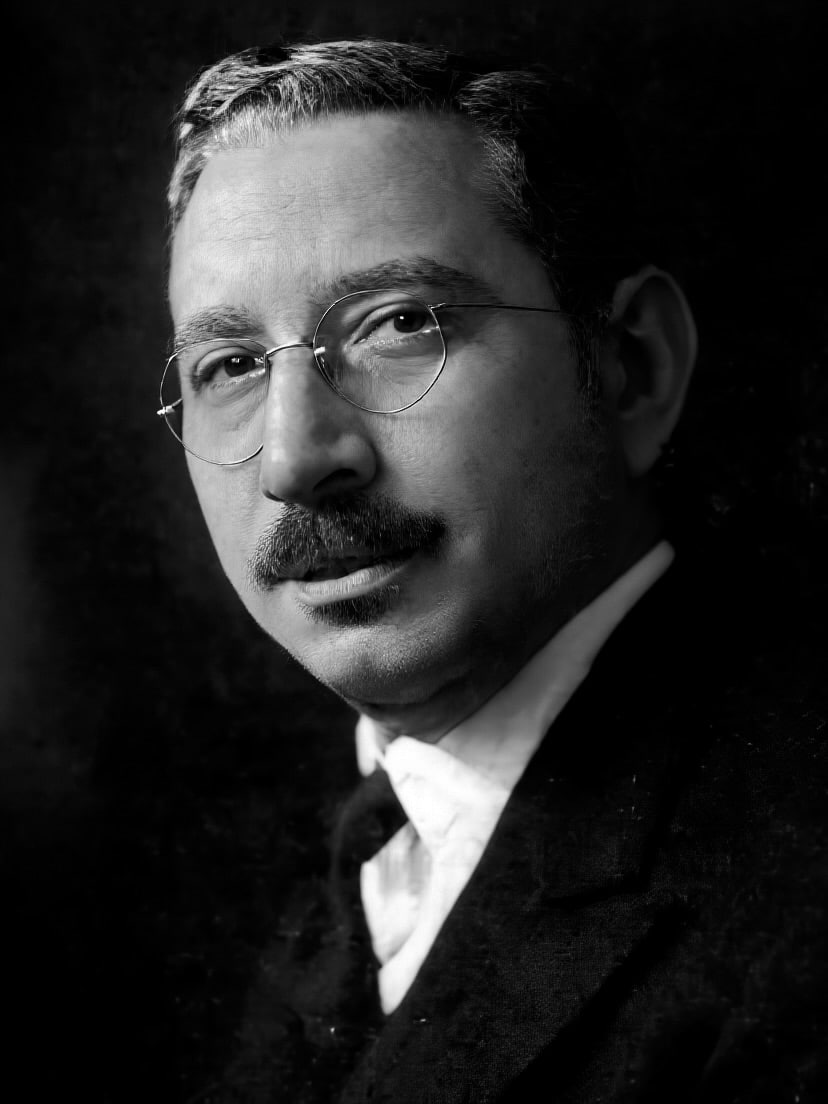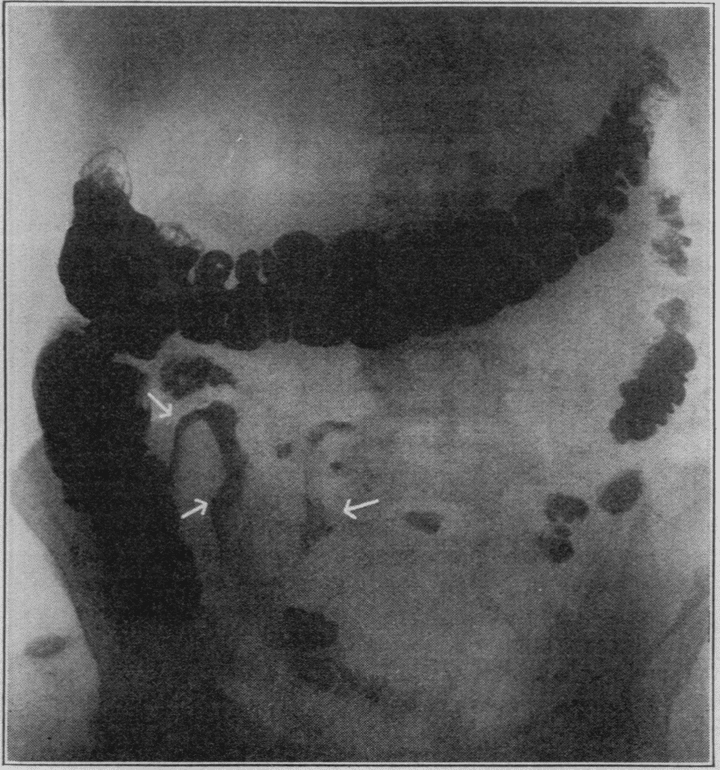Burrill B. Crohn

Burrill Bernard Crohn (1884-1983) was an American gastroenterologist.
Crohn was an American physician whose name is forever associated with Crohn’s disease, a chronic inflammatory condition of the gastrointestinal tract. Despite his own misgivings about the use of eponyms, it is through his work that “regional ileitis” was defined as a distinct clinical entity. His career at Mount Sinai Hospital in New York City spanned over six decades, during which he became a pivotal figure in the emerging field of gastroenterology.
Born in Manhattan to a large German-Jewish immigrant family, Crohn’s early experiences shaped a life of rigorous self-discipline and intellectual curiosity. He earned his medical degree from Columbia University in 1907 and completed a demanding internship at Mount Sinai, including a crucial year in pathology under Dr. Emanuel Libman. This early laboratory grounding guided his scientific approach to clinical medicine.
Crohn developed a deep interest in gastrointestinal diseases, becoming one of the first physicians to specialize in this field in the United States. He published extensively and was a founding figure in the American Gastroenterological Association, serving as its president in 1932—the same year his landmark paper on regional ileitis was presented. Though he preferred descriptive terms, the condition was soon widely referred to as Crohn’s disease.
Known for his modesty and compassion, Crohn continued to see patients and contribute to the medical literature well into his nineties. His dedication to understanding digestive diseases left a lasting legacy not only through his clinical insights but also through the generations of physicians he mentored.
Biography
- 1884 – Born June 13 in New York City.
- 1902 – Graduated B.A. from City College of New York.
- 1907 – M.D. from Columbia University College of Physicians and Surgeons; declined M.A. and Ph.D. due to cost.
- 1907–1910 – Internship and residency at Mount Sinai Hospital; completing a 2.5-year mixed medical and surgical internship, followed by a year in pathology under Emanuel Libman (1872-1946)
- 1913–1921 – Conducted pancreatic function research, often using himself as a subject.
- 1917 – Member of the American Gastroenterological Association (AGA)
- 1920 – Appointed first head of gastroenterology at Mount Sinai Hospital.
- 1927 – Published Affections of the Stomach.
- 1932 – Elected President of the AGA. Presented the seminal paper “Regional Ileitis: A Pathologic and Clinical Entity” with Leon Ginzburg and Gordon Oppenheimer at the AMA meeting. The disease would later be known as Crohn’s disease..
- 1943 – Published Understand Your Ulcer.
- 1945 – Consulting gastroenterologist at Mount Sinai.
- 1946 – Consultant in gastroenterology at Columbia University
- 1956 – Advised press during President Eisenhower’s ileitis surgery (see Charles McBurney)
- 1969 – Retired from Mount Sinai.
- 1983 – Died July 29 in New Milford, Connecticut
Medical Eponyms
Crohn’s disease (1932)
Crohn’s disease is a chronic, immune-mediated inflammatory bowel disease (IBD) characterized by transmural inflammation that can affect any part of the gastrointestinal tract, from the mouth to the anus. The terminal ileum and colon are most commonly involved, with a predilection for segmental (“skip”) lesions and a tendency toward complications such as strictures, fistulae, and abscess formation. Extraintestinal manifestations—including arthritis, uveitis, and erythema nodosum—are also frequently observed.
May 1932 – Crohn, along with Leon Ginzburg and Gordon Oppenheimer present “Terminal Ileitis: A New Clinical Entity” at the AMA in New Orleans. Initially listed as Crohn’s sole paper, co-authors were added in alphabetical order, after intervention by collaborating Mount Sinai surgeon Albert Ashton Berg (1872–1950).
October 1932 – Their article is published in JAMA as “Regional Ileitis: A Pathologic and Clinical Entity” — a concise clinicopathologic description of transmural necrotising inflammation in the terminal ileum. A case series of 14 patients aged between 17-years to 52-years:
We propose to describe, in its pathologic and clinical details, a disease of the terminal ileum, affecting mainly young adults, characterized by a subacute or chronic necrotizing and cicatrizing inflammation. The ulceration of the mucosa is accompanied by a disproportionate connective tissue reaction …associated with the formation of multiple fistulas.
The disease is clinically featured by symptoms resembling those of ulcerative colitis, ie, fever, diarrhea, emaciation, and a mass in the right iliac fossa usually requiring surgical resection. The etiology is unknown.
Crohn, Ginzburg, Oppenheimer 1932

Key Medical Contributions
Pancreatic and Biliary Research
Crohn’s early investigative work focused on pancreatic function, notably using a self-administered 36-inch duodenal tube to collect and analyze digestive secretions. These studies contributed to understanding of biliary and pancreatic disorders and the inadequacy of gastroenterostomy in treating duodenal ulcers.
Founding Gastroenterology as a Specialty
Crohn played a central role in establishing gastroenterology as a distinct discipline in the U.S., mentoring younger colleagues and shaping the scientific focus of the AGA. His appointment as Mount Sinai’s first gastroenterology head and election to AGA president in 1932 reflected this leadership.
Educational Contributions
An avid collector of medical texts, Crohn curated an exhibition of gastroenterological classics in 1934 and published extensively. His books, particularly Affections of the Stomach and Regional Ileitis, served both clinical and educational audiences.
Major Publications
- Crohn BB. Affections of the Stomach. 1927
- Crohn BB. The Psychoneuroses Affecting the Gastro-Intestinal Tract. Bull N Y Acad Med. 1930;6(3):155‐178.
- Crohn BB, Ginzburg L, Oppenheimer GD. Regional ileitis; a pathologic and clinical entity. JAMA. 1932; 99:1323-1329. [Crohn disease]
- Penner A, Crohn BB. Perianal fistulae as a complication of regional ileitis. Ann Surg. 1938; 108(5): 867‐873.
- Crohn BB. Chronic Gastritis: Clinical Aspects. Bull N Y Acad Med. 1939; 15(6): 392‐405.
- Crohn BB. Understand your ulcer. 1943
- Crohn BB. Regional Ileitis. 1949 (2e 1958)
- Crohn BB, Ginzburg L, Oppenheimer GD. Regional ileitis; a pathologic and clinical entity. Am J Med. 1952; 13(5): 583‐590. [Reprint with one figure omitted]
- Crohn BB. Notes On The Evolution Of A Medical Specialist, 1907-1965. Published 1984
Controversies
References
Biography
- Birch CA. Crohn’s disease. Burrill Bernard Crohn (born 1884). Practitioner. 1973 Oct;211(264):559-60.
- Waggoner WH. Dr. Burrill B. Crohn, 99, An Expert on Diseases of the Intestinal Tract. The New York Times. 1983 30th July
- Hellers G. Mannen bakom syndromet: Burrill B Crohn. En legend redan under sin livstid och Mount Sinai-sjukhusets största PR-tillgång [The man behind the syndrome: Burril B. Crohn. A legend in his time and the greatest PR resource at Mount Sinai hospital]. Lakartidningen. 1985 May 29;82(22):2045-6.
- Janowitz HD. Burrill B. Crohn (1884-1983). Mt. Sinai J Med 2000; 67: 12-3
- Ellis H. Burrill Bernard Crohn. J Perioper Pract. 2012;22(6):207.
- de Campos FG, Kotze PG. Burrill Bernard Crohn (1884-1983): the man behind the disease. Arq Bras Cir Dig. 2013;26(4):253‐255.
- van den Tweel JG. Crohn, Burrill Bernard (1884–1983) In: Pioneers in Pathology. 2017: 119-122
Eponymous terms
- Arawattigi SD. Regional Entero-Colitis (Crohn’s Disease). Ind Med Gaz. 1943;78(5):238‐241.
- Janowitz HD. An imaginary conversation with the gang of three: a ghostly interview with Burrill B. Crohn, Leon Ginzburg, and Gordon Oppenheimer. Mt Sinai J Med. 1996 Jan;63(1):61-5.
Eponym
the person behind the name
Dr. Geoffrey Jara-Almonte, MD is an Assistant Professor of Emergency Medicine at New York City Health and Hospitals Elmhurst Hospital Center and the Icahn School of Medicine at Mount Sinai. He is Assistant Program Director for the Emergency Medicine Residency at Mount Sinai Hospital. His academic focus is medical education with particular focus on resident mentorship, feedback, assessment and curricular design | Sinai EM |
BA MA (Oxon) MBChB (Edin) FACEM FFSEM. Emergency physician, Sir Charles Gairdner Hospital. Passion for rugby; medical history; medical education; and asynchronous learning #FOAMed evangelist. Co-founder and CTO of Life in the Fast lane | On Call: Principles and Protocol 4e| Eponyms | Books |

